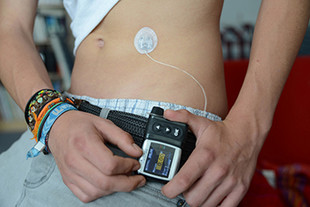Type 1 diabetes is the most common metabolic disease in children and adolescents. Insulin pump therapy may improve metabolic control in young patients with type 1 diabetes, but the association with short-term diabetes complications is unclear. Are the rates of severe hypoglycemia and diabetic ketoacidosis lower with insulin pump therapy than with insulin injection therapy in young patients with type 1 diabetes?
To answer these questions researcher conducted a population-based observational study between January 2011 and December 2015 in 350 diabetes centers in Germany, Austria, and Luxembourg. Patients using pump therapy (n = 9814) were matched with 9814 patients using injection therapy.
The Findings: In this population-based observational study including 30 579 young patients with type 1 diabetes, pump therapy, compared with injection therapy, was associated with significantly lower rates of severe hypoglycemia (9.55 vs 13.97 per 100 patient-years) and ketoacidosis (3.64 vs 4.26 per 100 patient-years), and with lower hemoglobin A1c levels (8.04% vs 8.22%) in a propensity score–matched cohort. Also total daily insulin doses were lower for pump therapy compared with injection therapy (0.84 U/kg vs 0.98 U/kg1). There was no significant difference in body mass index between both treatment regimens.
Original publication:
Beate Karges et al: Association of Insulin Pump Therapy vs Insulin Injection Therapy With Severe Hypoglycemia, Ketoacidosis, and Glycemic Control Among Children, Adolescents, and Young Adults With Type 1 Diabetes. JAMA 2017; DOI:10.1001/jama.2017.13994

